Maze Canyonlands 2013 Photo Tour Diary
3 Comments
Despite being sold out in a week – group size is strictly limited by the NPS -, the Maze Canyonlands photo tour almost did not happen. It was initially scheduled from October 8 to October 12, shortly after the new moon. When the federal government shut down on October 1, all the National Parks closed. As I followed the Washington gridlock with anxiety, the participant group showed amazing flexibility: despite traveling from far corners of the US, all agreed to try and delay the tour by a week, starting on October 14 instead, with a cut-off date of October 12. On October 12, having wired state funds to the federal government to pay for their normal operation for ten days, Utah re-opened its five National Parks. The new dates meant that we had lost all of backcountry campsites, but our guide was able to nevertheless secure enough sites for slightly reshuffled itinerary.
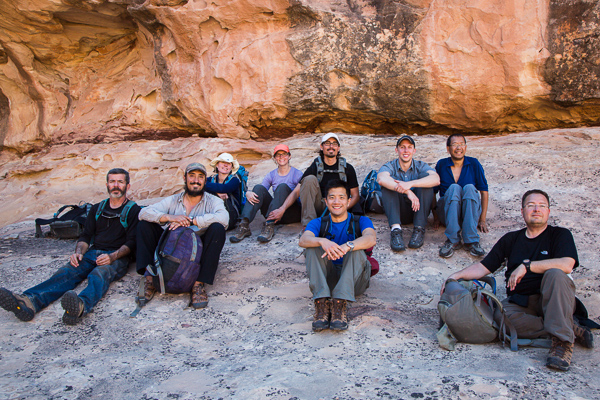
Because of the adventurous nature of the tour and its location, I was anticipating a group with great ability, company and camaraderie. It was indeed a pleasure to travel and photograph with such fine people and photographers, and I grateful to Kurt, Dave, Roland, Kendra, Michael and Rebecca for making the photo tour a success despite the setbacks.
Our lead guide Brian Martinez – best canyon guide ever ! – of Navtec Expeditions deserves special praise for his skills and can-do attitude: waking up at 3.30am to prepare coffee, leading a group on miles of sparsely marked, primitive backcountry route in pitch dark so that we could get at our chosen photography location in time ? No problem, this is something Brian would have suggested himself, meeting all challenges with a reassuring and contagious laughter, also heard each time he stirred the car over a tough obstacle. Despite particularly long days, Brian and Matt safely drove the 4WD vehicles on hair-rising roads and cooked meals way more elaborate than they needed to be (like Dave wrote, see some of them in his photos). Even though I am a vegetarian, I ate better than at home.
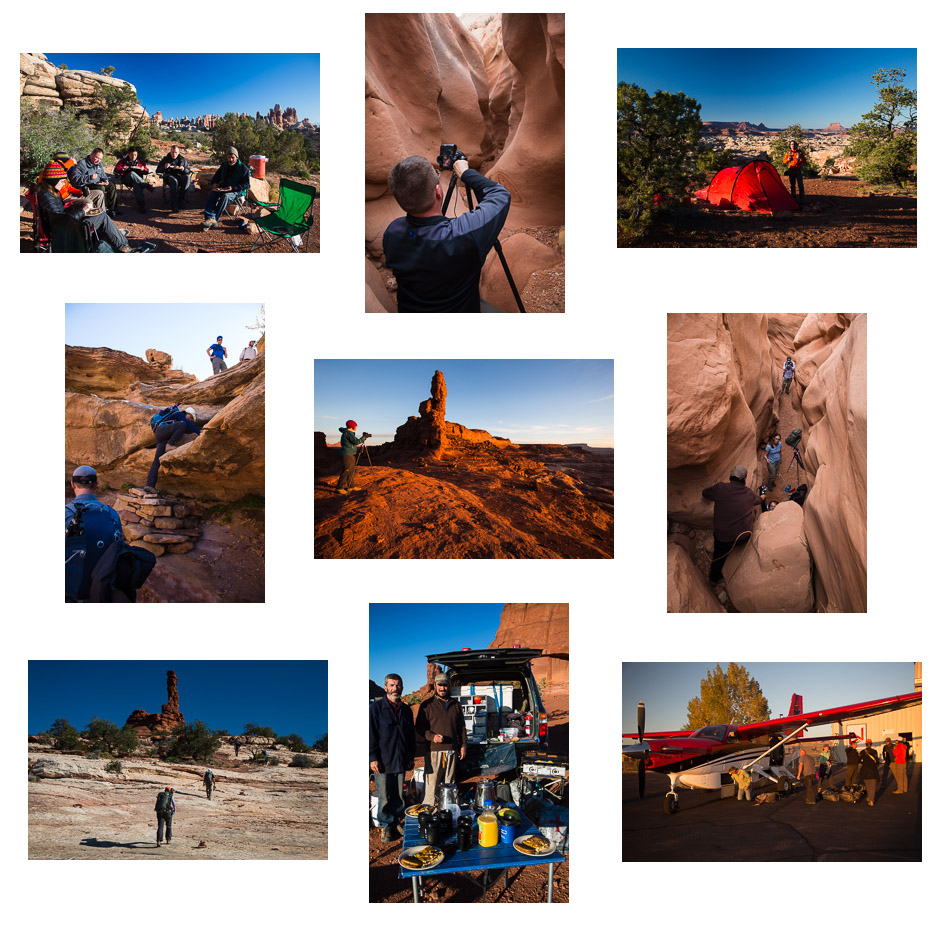
In the following, for the sake of simplicity, I’ll use my images, but be sure to check terrific work in the participants albums:
Besides their personal takes on the same subjects, many that I did not even see – always a great benefit of traveling with other talented photographers, they produced many images which capture so well how it was to be on the trip.
Day 1
After a quick shoot at Horseshoe Reservoir, we stopped at the Hans Ranger Station to confirm conditions and campsites, then had a lunch and shoot at the High Spur site with great views over the other side of Canyonlands.
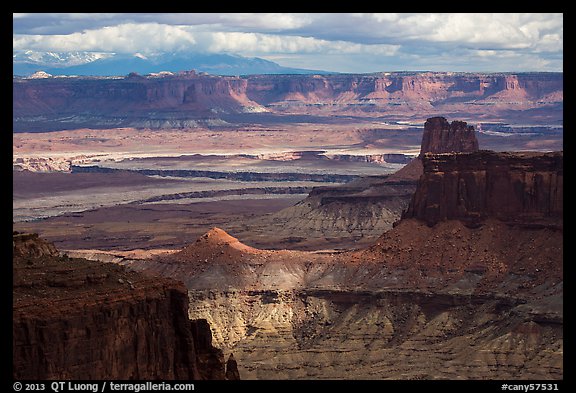
In the afternoon, we hiked the High Spur slot canyon for 2.5 miles of beautiful and varied narrows without meeting anybody, a stark contrast in both length and visitation with something like Antelope Canyon. Brian said to hold on photographing because it would get better, but it was difficult to do so. The canyon required some squeezing in pretty tight spaces, but was not technical. There was only one short downclimb for which Brian pulled out a short rope, which turned out not necessary once the backpacks were passed hand-to-hand.
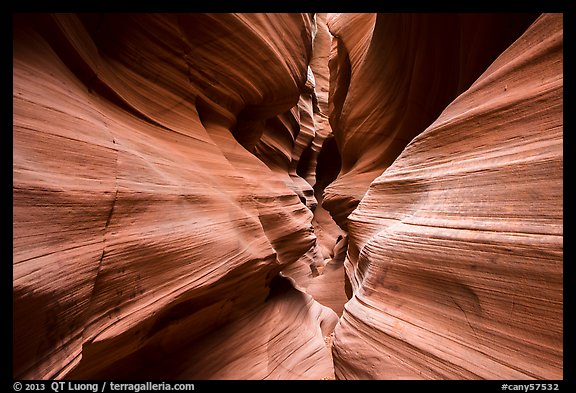
We emerged from the canyon just in time for sunset, then hiked, drove some, and set-up our camp, readying for one of our two early starts.
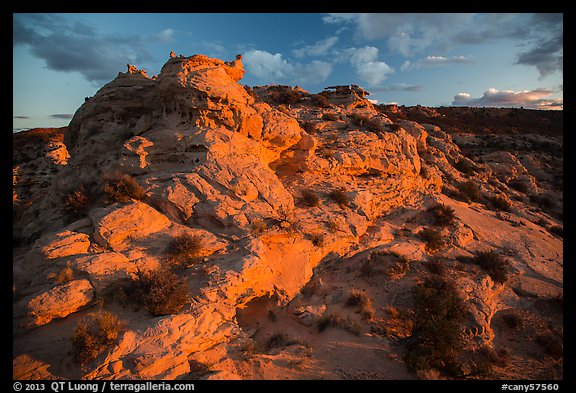
Day 2
We got up at 3.30am and hiked the steep Deadman trail into Horseshoe Canyon in the dark to try and photograph the Great Gallery with stars, using the short window after moonset but before dawn. The Great Gallery, considered by some (including the well-traveled Michael Kelsey) to be the best rock art panel anywhere, was painted by the Archaic People who lived in Utah from 8,000 to 2,000 years ago, predating the Anasazi.
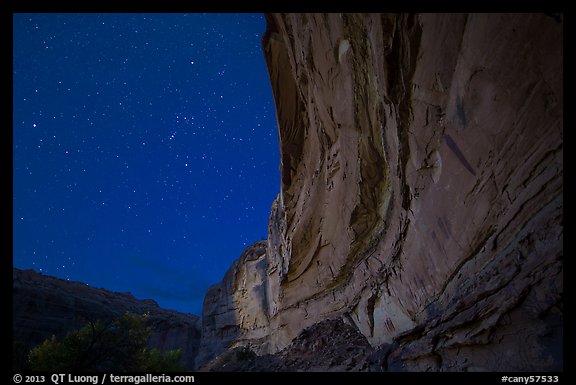
The reflected light morning glow on the panel did not happen because of clouds, but the light on the panel was still better than the direct sunlight most visitors see. Overcast conditions were also favorable to photograph the autumn foliage in the canyon, which contrasted sharply with the dry desert environment above.
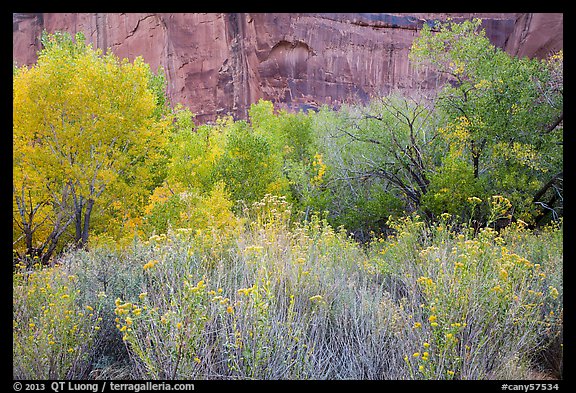
After late breakfast, we embarked on a long driving day, going down the famed Flint Trail after a brief white-out with snow flurries. While driving over rock ledges in Teapot Canyon, we understood why the Maze District is traveled only by 3% of visitors to the Canyonlands National Park. Although our guides drive expedition-grade four-wheel drive vehicles with lifts and massive tires, constant attention and tricky maneuvers were required.
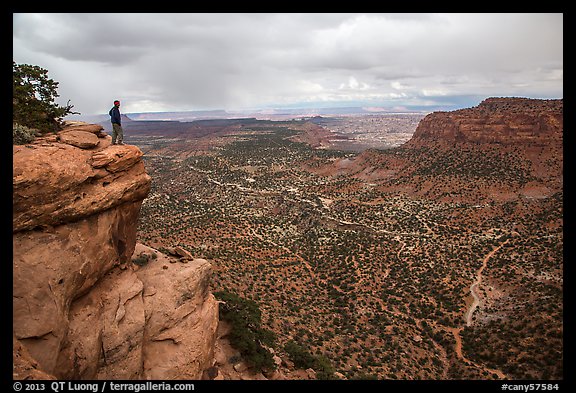
We made a few stops to photograph roadside. Since the light was weak, we sought details, such as in this area with bentonite and petrified wood.
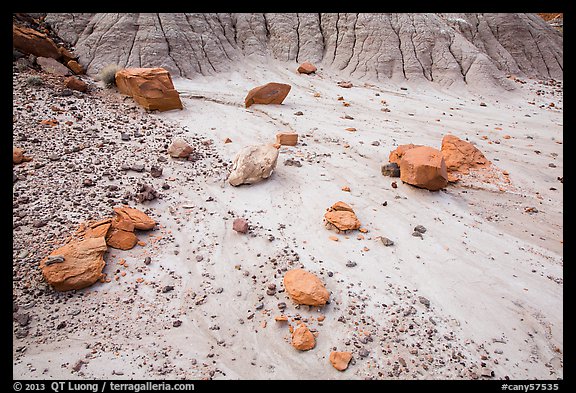
The day before, another Navtec vehicle had broken its gear box. We quickly said hi to the one-armed (!) traveling mechanic who was sent to replace the part in the field before reaching our camp.
Day 3
Camping at the Dollhouse #3 site, one of the most remote “road”-accessible locations in the US, we walked out of our tents for a sunrise session over the spires of the whimsical spires, just ten minutes from camp.
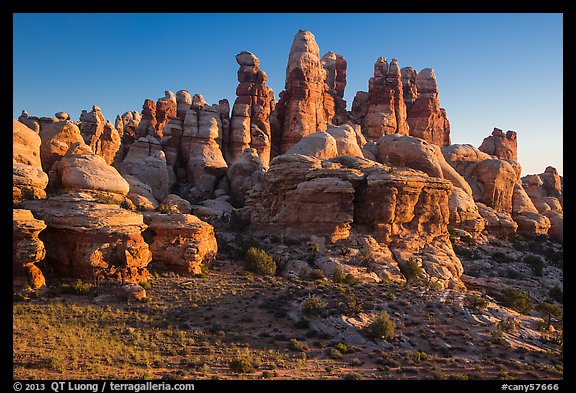
After breakfast, we hiked a short loop (only 1.5 miles, but took 3 hours with photography) to an overlook above Surprise Valley and the Colorado River, visiting also a beautifully lit chamber – where Michael stirred up sand to create sunrays – and an ancient granary.
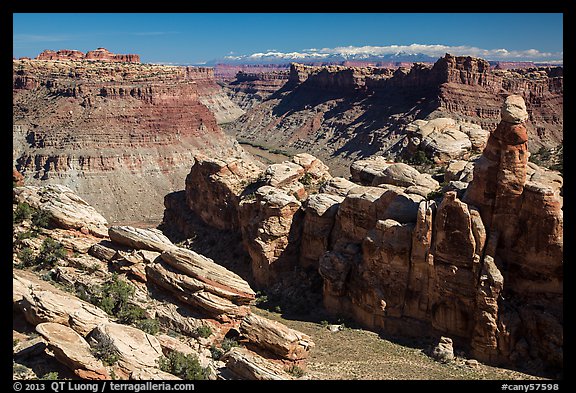
After driving to the Land of Standing Rocks and setting up our camp, we went for a late afternoon hike of a few miles on the Chocolate Drops trail, where we stayed until dusk.
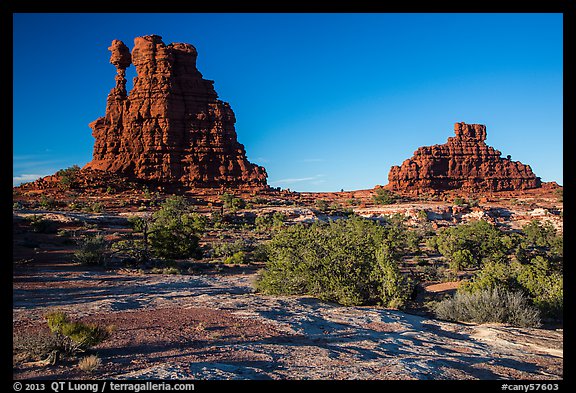
We hiked back in the dark, then did a moonlit night photography session at the camp while the guides were busy cooking dinner. Because of the bright moon, we had to find lighted subjects for a sense of night, so we included our tents in compositions.
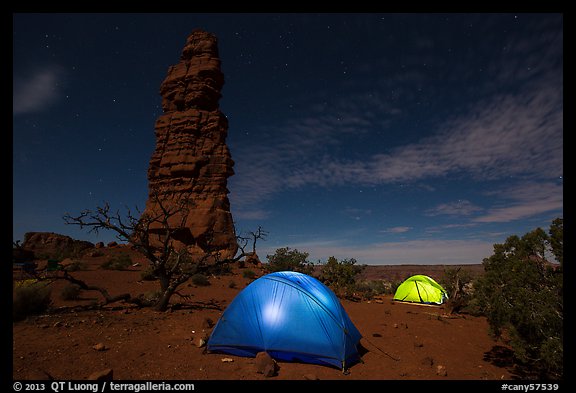
Day 4
This was going to be a big hiking day. We got again a very early start in order to get to Petes Mesa in time for sunrise. I’ll highlight this fantastic location in another post.
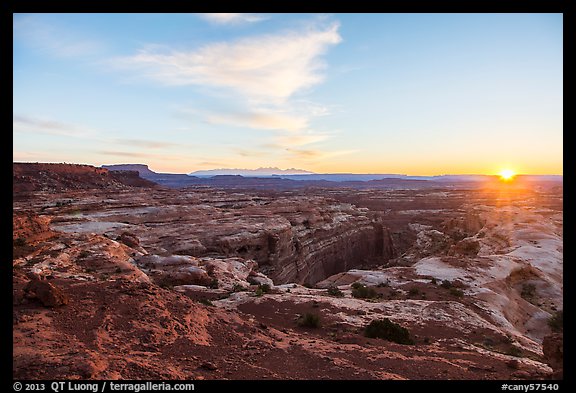
Afterwards, we hiked down to the bottom of the Maze via the Pictograph Fork – most dangerous hike in North America according to Backpacker magazine – where we saw lovely interlocking canyons that very few get to visit. The difficulty of travel comes more from the remoteness, the multitude of side canyons which all look alike, than from the terrain, as the canyons are wide and have sandy bottoms.
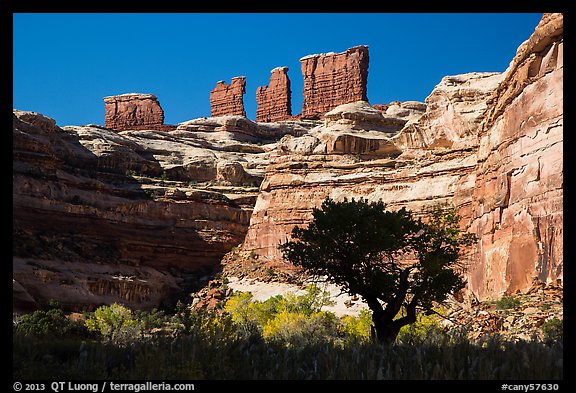
Mid-way our 12-mile loop, which everybody completed easily, we stopped for lunch at the base of the Harvest Scene. The panel of life-size pictographs, in the Barrier Canyon style identical to the Great Gallery in Horseshoe Canyon, is named so because one of the figures, at the right, appears to be holding a sheaf of rice grass.
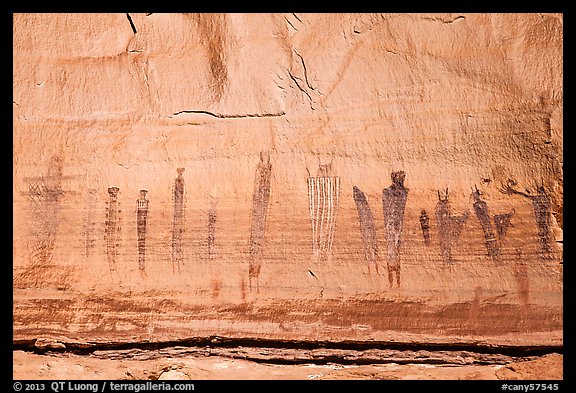
After returning to camp and resting a bit, we drove to Chimney Rock for sunset, then were happy to return for a second night to our amazing Standing Rock campsite.
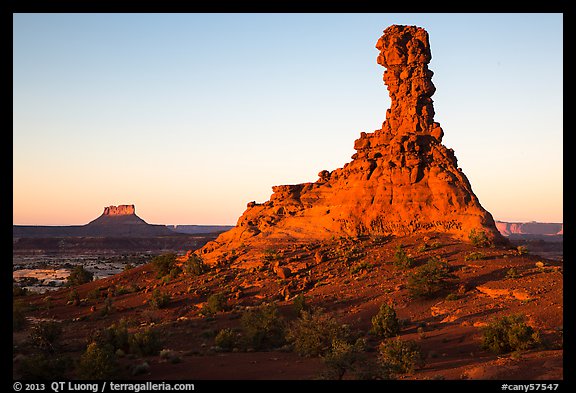
Day 5
On our last morning, we rolled out of our tents to photograph a view of the Maze from above, lit by the first rays of sun, with the Chocolate Drops under which we had hiked the previous day.
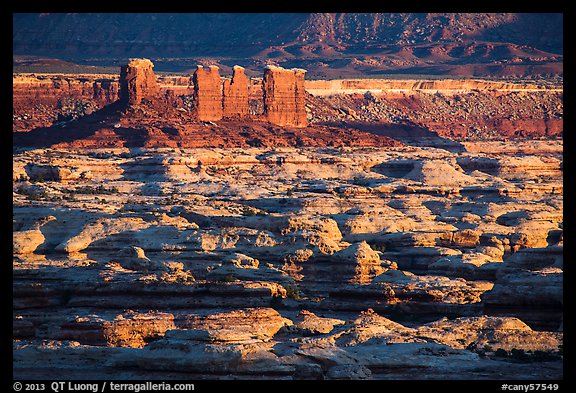
This was another long driving day to get out of the Maze district. The roads are so difficult that reaching Chimney Rock requires 8 hours of driving from Moab, although it is less than 40 miles as the crow flies. To make it worse, during our lunch stop/shoot, my tripod tipped over as I took my eye out of it to talk, and upon impact (eventually resulting in a $700 repair bill) the memory card self-ejected from the 5D3, seemingly over a cliff. I am grateful to the group for spending time to comb the surroundings, eventually finding it, however at the expense of their own photo time.
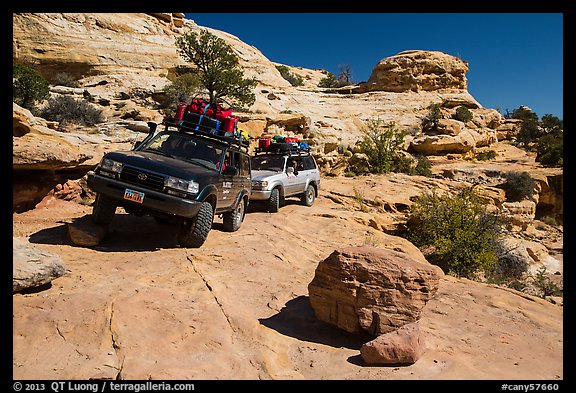
Instead of backtracking North to Moab and spending all that time in the car, we visited the southern part of the area, before being met by a plane at an airstrip near Hite. During the flight, we had the satisfaction to see from the air the terrain we drove and hiked. As everybody had a window seat (with even a few to spare), we made good use of the light, landing at the Canyonlands Field Airport near Moab just before sunset.
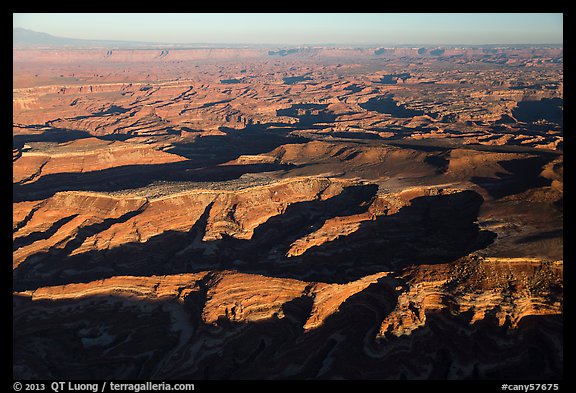
After a quick shower in our respective hotels, we gathered in a restaurant to celebrate a great trip, before meeting Brian and Matt at the Navtec office later in the night to retrieve our bags. I cannot believe it’s been already a month since we left the canyons. Thanks again Brian, Matt, Kurt, Dave, Roland, Kendra, Michael and Rebecca !
If you can find two weeks for a photographic adventure of a lifetime next spring, consider my Grand Canyon by Raft Photography Workshop, since this is a rare opportunity which may not be offered again. The locations are even more remote, but the trip is actually less demanding.


Looks like you had a great tour with excellent guides… and food too. Canyonlands is an inspiring and raw experience. I was lucky enough to horse pack into the Maze with my Mom, Dad, Parker and Dilly Hamilton and legendary guides Art and A. C. Ekker, after which a number of places are named in the area. I believe I still hold the record for the youngest child to ever travel non-motorized into the Maze at age 2 1/2. My father, American wilderness photographer Philip Hyde, befriended most of the old timers because he spent so much time in the canyons. He and Mom used to visit Bates Wilson, the park Superindendent that helped Arches become a national park and helped in several expansions of Canyonlands. Dad’s book, Slickrock, with Edward Abbey, as you’ve written about, played a major role in the largest of those expansions. My father’s last trip with the large format camera was to canyon country and his last large format photographs were either in Canyonlands or the vicinity. I’ll know more exactly after further research. Now that you’ve been there, you may understand how such a place can grow on you.
Hi David, thanks for the note. I am wondering, which kind of memories do you hold from that trip ? During the long drive, Brian told us stories about the Ekkers, and the Ekker Butte is prominent in several of my compositions. Your father wrote of the Maze in Slickrock “Its prime quality is wildness, which will disappear if the country is made accessible to windshield tourists”. I am glad that the NPS has agreed. That was actually my second trip to the area. I had met Brian Martinez there during my first (solo) trip, which is how the idea of the photo tour began.
QT, I have vague memories enhanced and triggered by Dad’s photographs. I remember more of the jeep trips into the Waterpocket Fold country also with the Ekkers and Hamiltons. Parker Hamilton, everyone called him “Ham,” was an excellent photographer. I’m surprised none of his work seems to have made it into digital form. I remember long, bumpy, jolting, jarring, bone rattling, rocky rides in the jeeps or Art Ekker’s Wagoneer, just as you mention. I also remember Art Ekker making coffee, A. C. making pancakes. For some reason I remember the breakfasts better than the dinners, though I think the dinners were good too: basic cowboy style fare. I remember the horses and how A. C. especially could work magic with them. I liked A. C. and his stories. I remember riding around in his truck with him and sometimes in front of his saddle rather than my mother’s. Dad made a photograph of me asleep in the saddle on A. C.’s horse.